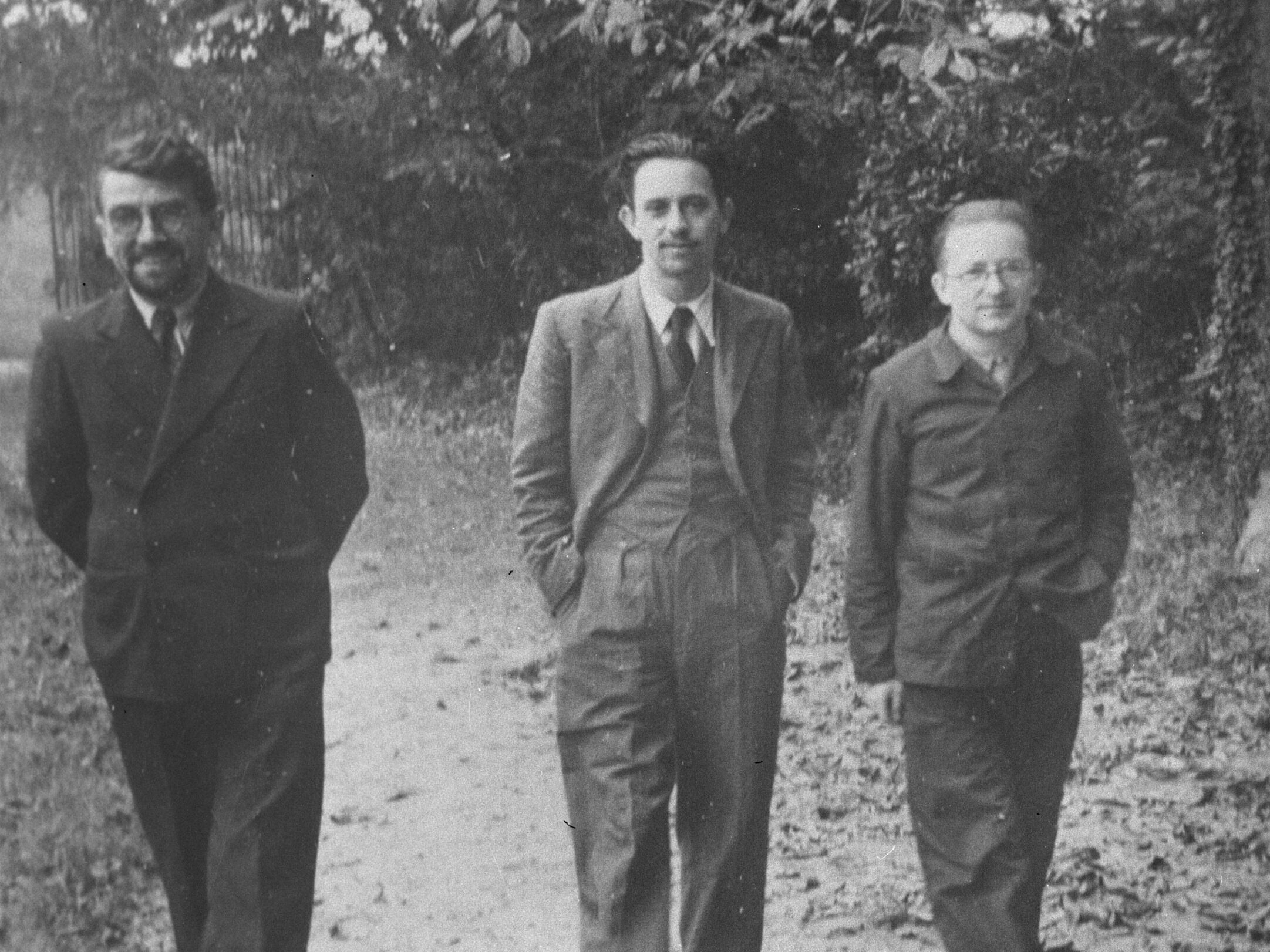Marian Rejewski deciphered Enigma. “A milestone that saved a human life”

Marian Rejewski, who comes from Bydgoszcz, broke a seemingly unbreakable code. The outstanding mathematician and cryptologist was the first in the world to solve the Enigma puzzle and influenced the course of World War II.
Marian Rejewski was born on August 16, 1905 in Bydgoszcz, when the city was under Prussian rule. There he graduated from the State Classical Gymnasium, and then moved to study mathematics in Poznań. He was fluent in German, so already at that time he began attending a cryptology course organized by the Cipher Bureau of the Second Division of the Polish Army General Staff. The idea was to use mathematical methods, mainly combinatorics and probabilistics, to break modern German machine ciphers.
At that time, Rejewski met Henryk Zygalski and Jerzy Różycki, together with whom he will later go down in history.
From Bydgoszcz via Poznań to Warsaw
For a year he studied in Göttingen in the field of mathematical and insurance statistics, but soon returned to Poznań – he accepted the position of an assistant at the university, and after hours he started working in the local branch of the Cipher Bureau. He decrypted intercepted German radio messages.
From September 1932, all cryptological work was transferred to the Warsaw Cipher Bureau. Rejewski also decided to move and this decision turned out to be a turning point in his career and life. In Warsaw, he was given a special task – the 27-year-old began work on deciphering military correspondence encrypted by the Enigma used by the Nazis.
In those days, breaking such an unimaginable number of letter combinations seemed virtually impossible. “The number of Enigma cipher combinations, taking into account only the plug-in connections, was 100391791500. Taking into account the so-called reversing rollers – 7905875085625. Taking into account the capabilities of the rotors encrypting about 4 septillion” – indicated Władysław Kozaczuk in the book “In the Circle of Enigma”. All previous attempts had failed, and the matter was burning.
Difficult beginnings
“We didn’t know exactly what our job was supposed to be about – well, we just thought that we would be solving German ciphers” – Rejewski recalled years later. The scientist openly admitted that the beginnings were difficult. “We had no starting point,” he said.
“Soon my colleagues and I were so thoroughly isolated from the rest of the staff that not even the breakfast-tea janitor was allowed into our room, the door of which was hung with a black curtain, so that our room was jokingly nicknamed the black chamber, according to Yardley’s book.” Rejewski reported.
Secret mission after hours
However, it was Rejewski, then 27, who had no equal in mathematical equations and mindfulness. His enormous potential was quickly noticed and he was entrusted with a special mission. One day, Maksymilian Cieszki, deputy head of the Cipher Bureau, asked the cryptologist to come to work in the afternoons, two hours a day. The latter, not yet burdened with family responsibilities, agreed to it.
He worked independently, secretly even from his colleagues. He received additional materials – documentation obtained by French intelligence from a German spy. It contained tables of keys that indicated the proper setting of the machine before encryption, so that the sender and recipient of the message could communicate, which proved to be a good starting point. Later it turned out that Rejewski also had a commercial version of Enigma at his disposal, obtained by Polish intelligence by accident. Information from radio listening also played an important role.
He has done the impossible
“Deciphering Enigma required two actions. Firstly, it was necessary to reconstruct the machine itself, and secondly, to develop methods that would allow for quick recovery of daily keys, because they allowed for reading the encrypted message. It was a Herculean challenge, considering that the whole adventure with the machine began relatively recently. Rejewski had two tools at his disposal: mathematical knowledge from his studies and imagination, explained Robert Gawłowski in the book I am the one who deciphered the Enigma. The Unknown Story of Marian Rejewski”.
Finally, the impossible became possible – Rejewski deciphered Enigma. It probably happened in the last days of 1932, after Christmas, but the exact date is unknown.
The event was unprecedented, although Rejewski himself downplayed his achievement. “I don’t understand what all the fuss is for, I did what prof taught us. Krygowski during his first year of studies,” he wrote in one of his letters.
The moment when the code was cracked was also significant – a few weeks before Adolf Hitler came to power. “If we had gone to work not in October 1932 but a few months later, we would have had much more difficulty. We even had the impression that the Germans had become nervous from then on. As if they intuitively sensed that something had happened,” Rejewski later said.
Further work
However, this was not a closed chapter. The Germans were constantly improving the Enigma’s security, so the three mathematicians had to continue to work out the code. Rejewski, Zygalski and Różycki introduced new, innovative machines and devices that allowed for acceleration of decryption, including the so-called crypto bomb.
In 1939, a few weeks before the outbreak of war, Rejewski, together with other cryptologists and employees of the Cipher Bureau, presented the decryption method and a copy of Enigma to representatives of British and French military intelligence. When the war began, Rejewski and his team evacuated to France, where they continued to work on the decryption of German correspondence. In 1943 he got to Great Britain. Together with Zygalski, they joined the Polish army as privates. They took up work in the radio unit of the Staff of the Commander-in-Chief of the Polish Armed Forces in Stanmore-Boxmoor near London.
“You’ll hear about me again…”
After the end of hostilities, Rejewski returned to his native Bydgoszcz. For the next few years he worked there as a clerk in factories. None of his associates were aware of his achievements at the time.
“Years later, colleagues from work said that Mr. Marian was a quiet, calm, but also always a very helpful man, with whom there was no reason to sit down to play chess. And he solved crossword puzzles as if he had made them himself. That’s why they were a bit surprised when, on the last day of his work, he said: “You’ll hear about me again…”, wrote Gawłowski.
Rejewski admitted to deciphering Enigma in his memoirs written after his retirement in 1967. He deposited the manuscript in the then Military Historical Institute, and the public heard about the breaking of the code by Poles only six years later, in 1973.
“It never occurred to me that I was facing a man who, in my perception, contributed more to the victory over Hitler than all the armies,” Jan Nowak Jeziorański recalled Rejewski.
In his last interview for “Świat Młodych”, Rejewski explained that the story with Enigma “proves that always, whether in war or peacetime, the most can be done for the country, serving it with knowledge and thoughtful work.” “And secondly – it proves the power of mathematics, logic, precision of thinking” – he said.
Rejewski died suddenly of a heart attack in 1980, at the age of 74. He was buried with military honors at Warsaw’s Powązki Cemetery
“A milestone that saved a human life”
The work of three cryptologists has been appreciated in Poland and in the world. In 2010, President Aleksander Kwaśniewski posthumously decorated them with the Grand Crosses of the Order of Polonia Restituta. NATO honored Rejewski with the Knowlton Decoration, awarded to individuals who have made a significant contribution to the achievements and successes of Military Intelligence.
In turn, in 2014, Rejewski, Zygalski and Różycki received the prestigious Milestone International distinction from the Institute of Electrical and Electronics Engineers, awarded for scientific achievements, without which the world would look different. – It was a milestone of great importance, actually one of the few that saved a human life. Technical achievements usually contribute to the development of industry, entertainment or communication. This one saved human lives, said IEEE President Prof. Roberto de Marca, presenting the distinction, during the ceremony at the Warsaw University of Technology.






